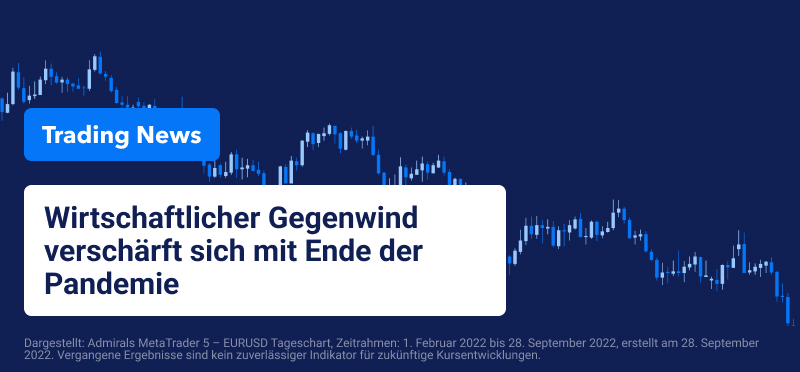The time we have been waiting for since the beginning of the year 2020 has come close. The world will emerge stronger from the COVID-19 pandemic, according to a joint statement by the United States and the World Health Organization (WHO). As global health improves and this supports the labor economy, headwinds continue to affect productivity in the world’s largest markets.
On Thursday, September 29th, the US will release annual GDP results for the second quarter. The world’s largest economy is in a technical recession and the latest data on durable goods orders for August remains in negative territory at -0.2%. GDP for the second quarter is expected to be negative 0.6 percent on an annual basis. If the actual results come in better or worse than expected, the US dollar currency pairs may move.
High inflation rates are the main reason for the US Federal Reserve’s monetary policy tightening and dampening investor sentiment and investment levels based on the recent sell-off in global stock markets. While it is natural for prices to rise faster between 2020 and early 2022 than during the COVID-19 period, this is cold consolation for policymakers facing inflation rates well above the 2% target. Nor does it help consumers who are facing higher prices and higher mortgage interest rates.
While a strong US dollar boosts the purchasing power of American travelers and purchasing managers who buy goods from abroad, it also reduces exports, which become more expensive due to the exchange rate.
There are similarities in Europe that inflation is high, but the situation is different in that the Euro is at a multi-decade low at the time of writing. This affects the purchasing power of consumers, but has a positive effect on the exports of the Eurozone due to exchange rates.
The British economy is facing major headwinds, not least a weak currency and rising inflation.
The bright spot for all three economies is continued strong employment, supporting the recovery from recessions and uncertainty after COVID-19.
China, the world’s second largest economy, is ramping up its economic drivers as we monitor the results of the September PMI, which is due for release on Friday, September 30th. The non-manufacturing PMI is seen at 52, down from 52.6 in August – still in growth territory. The NBS Manufacturing PMI is expected to decline to 49.2 in September from 49.4 in August.
Once the Chinese economy bounces back, it should support the Asian giant’s trading partners the UK, US and EU, and possibly stabilize the global economy enough to withstand headwinds.
For more trading events also use our forex calendar.
Online Trading Seminars at Admirals
Interested in learning more about trading? At Admirals, we host regular webinars covering a variety of trading topics and they are absolutely FREE! Click the banner below for upcoming dates:
This material does not constitute and should not be construed as investment advice, an investment recommendation, or an offer or solicitation of any transaction in financial instruments. Please be aware that such items are not reliable predictions of current or future developments as conditions are subject to change. Before making any type of investment, you should consult an independent financial advisor to ensure that you have a proper understanding and assessment of the risks involved.

“Alcohol buff. Troublemaker. Introvert. Student. Social media lover. Web ninja. Bacon fan. Reader.”






More Stories
frap | An American company buys the Crans Montana ski resort
“A ban would destroy seven million businesses” » Leadersnet
What are the opportunities available to the company?